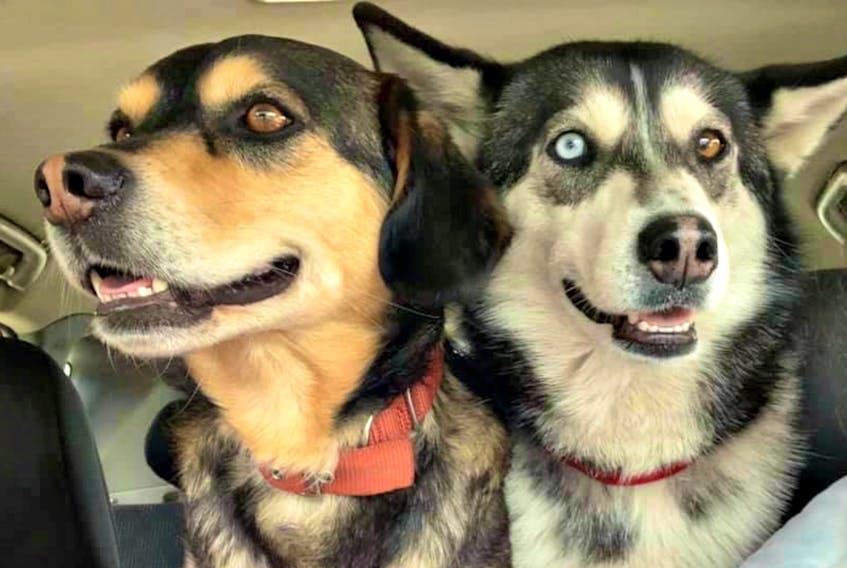If the coronavirus had a silver lining, it has been more time spent with our canine companions.
But heartbreaking howls, whines, and even mischief may make owners feel guilty about leaving the house after their pets have grown accustomed to a 24-hour buffet of walks, cuddles, and treats. According to Karen Overall, separation anxiety boils down to basic pet psychology.
“Being home with your pets does not create an anxiety state that is triggered if you are not home. If the change is big enough – and these are big shifts – returning to work will be a sufficient stressor to reveal the extent of the distress previously masked,” said the associate professor at the Atlantic Veterinary College (AVC) in Charlottetown, P.E.I.

“It is important to distinguish true clinical separation anxiety from dogs who are unhappy about being left or who want to go. A lot of dogs visited places with their people during the pandemic and loved it. Not being able to go is a changed rule and a loss.”
Overall acknowledged problems may hide if pets live in a protected bubble.
“Some dogs (and cats) are unhappy but resigned when people leave. We are all social species, and they know that it will be quiet for a while, and studies have shown that these dogs mostly nap.”
Comfort in crisis
For Kathleen Smith, a resident of Corner Brook, N.L., her three cats and two dogs proved to be a lifesaver, providing companionship, consistency, and joy while she worked from home.
“They followed my dad and me around as our shadows while keeping us busy. During the lockdown, we built our cats a ‘catio’ (an outside enclosure), so they could safely enjoy the fresh air while I took my two pups for new adventures along the trails in Rocky Harbour, Trout River, and Howley,” said Smith.

“But Skip, a shepherd-beagle mix, will have a hard time with us returning to work. I am worried it will be worse for him, not having someone around after these last few months. And my cats, when I return home after a few hours, they run up to me meowing and purring – as if I had been gone for days.”
Smith is trying new kenneling methods, leaving the television on for background noise, and returning home during lunch breaks to make the transition easier.
“My pets all have their personalities but are similar in the sense of wanting constant love and attention, which they deserve,” she said.
Recognizing signs of separation anxiety
Karen Hannam, a foster and dog trainer with Good Bones Dog Rescue, Rehab, Re-Home in Nova Scotia, said animals could exhibit some troubling behaviours when acclimating to life without their people being around.

“We are their source of comfort and companionship, as much as we think they are ours,” she said while listing warning signs.
- Pacing
- Excessive panting
- Vocalizing their discomfort
- Trembling
- Attempting to escape with you, or hide
- Clinginess
- Urinating or defecating in the home
- Changes in appetite or sleep and destructive behaviour while away.
Pets do well with gradual routine adjustments, she adds.
“Think of preventing separation anxiety as being a skill you need to teach your dog. Your dog needs to learn how to walk on a leash, so you teach it how. The same should go for preventing separation anxiety; you need to teach your dog how to entertain themselves when you are not there,” said Hannam.
"Start small by encouraging your dog to spend time alone while you are doing something like cooking dinner. Give them space to go and something to do, such as a Kong filled with yummy goodies, or a puzzle toy, or perhaps a bone. You can also give them high-value, time-consuming items."
Overall agreed on the steps of entertaining the dog with toys and treats.
She added, "When you leave, do not rush. Arousal is not helpful for anyone. Instead, plan your departure. If your dog is comfortable in a crate (some panic in a crate), encourage the pet to spend more time there during the day with treats, toys, etc., with you still around."
Giving the dog time to exercise, settle, and extra comfort before leaving can help the transition, said Overall.
“Including letting the dog know they are valued, leaving on lights (when it is dark) and a radio or television, as well as monitoring the pet with remote devices such as Furbo.”
The key is to notice changes.
“Did we notice that the dog was awake and looking at us when the alarm went off? Did we notice that the dog carried her biscuits to where we were getting dressed but did not eat? Did we notice that the dog has diarrhea most weekdays but not on weekends?” asked Overall.
Treatment for separation anxiety
Stopping symptoms early avoids them becoming a habit.
"If the dog feels anxious, and practices any of the behaviours mentioned above, then you have left the dog for too long for what they were ready to handle. A positive reinforcement dog trainer can help guide you if you are stuck, but you start slow," said Hannam.
She suggested behaviour modification.
"Step outside the door for a few seconds, then for 10 seconds, then for 20 seconds, then for a few minutes, etc. Remembering that if your dog becomes anxious, you need to revert to the previous step when it did not show signs of distress and then build up from there," she explained.
While behaviour modification can help, Overall said that true anti-anxiety medications – not sedatives – have been shown to speed the rate of behaviour modification by three times.
“And, for some more mildly affected dogs and cats, there are now some prescription diets that help reduce stress and buffer the effects of some of the brain neurochemicals that make dogs and cats so anxious,” Overall said.
After monitoring a dog and finding potential evidence of distress, it is advised to talk to a veterinarian as the first and fastest resource.
"Separation anxiety is a co-morbid condition – this means that if you have this, you likely have other anxiety-related disorders that need to be treated," said Overall, while noting the AVC is setting up a behavioural medicine program, complete with a behavioural medicine clinic to treat separation anxiety among the many other symptoms.









